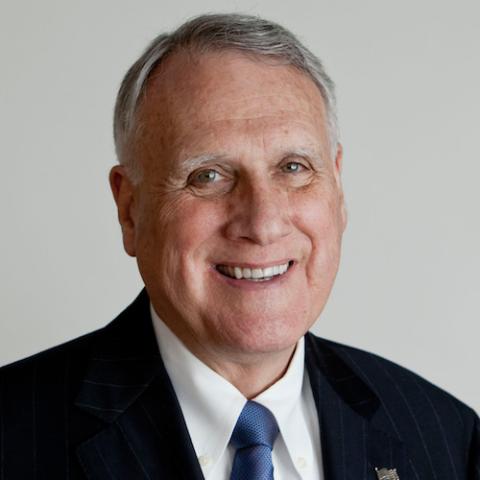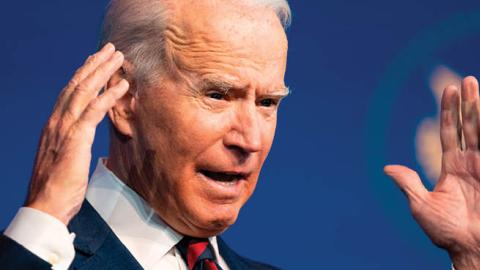President-elect Joe Biden promised during his election campaign to extend the New Strategic Arms Reduction Treaty (START), which expires in February, for another five years and then pursue a new nuclear arms reduction treaty.
Recently, others in the Democratic Party have begun to publicly advocate a shorter-term extension to afford the incoming Biden administration a chance to pursue its own nuclear arms reduction agreement more quickly.
Such a potential agreement should have to pass three conditions when submitted to the U.S. Senate: first, the treaty should cover all nuclear weapons; second, it is time to abandon the Cold War paradigm and include rising powers, like China, in arms control; and, third, the U.S. must remain committed to a robust modernization of its nuclear weapons complex and triad.
Conceding the Russian position when it negotiated a successor to the original Strategic Arms Reduction Treaty, President Barack Obama’s administration continued the Cold War legacy of only covering certain types of Russian nuclear forces, even though it was well-understood that Russia possessed a 10-to-1 advantage over the U.S. in uncovered so-called "non-strategic" nuclear weapons.
That is among the reasons why the 2010 Senate Resolution of Ratification on the New START passed by the narrowest margin in the nearly 50-year history of strategic nuclear arms control treaties.
This is also why that resolution included a requirement that the Obama administration immediately seek to pursue a follow-on treaty that would capture these other nuclear weapons (though Russian leaders never took seriously attempts by the Obama administration to obtain such an agreement — and why would they?).
New START was a one-sided deal in Russia’s favor, as Russia was actually allowed to increase its strategic nuclear forces to reach the treaty limits, while the U.S. was obligated to reduce its nuclear forces.
Indeed, 10 years after New START was ratified, Russia’s advantage has only grown, according to Secretary of State Mike Pompeo.
Pompeo said that "only 45 percent of Russia’s nuclear arsenal is subject to numerical limits ... meanwhile, that agreement restricts 92 percent of America’s arsenal."
This imbalance is why President Trump was correct to insist that, in exchange for an extension of New START, Russia must agree to include all of its nuclear weapons in a future arms control deal.
The second necessary condition is to include the People’s Republic of China in the treaty. Communist China has become a major nuclear power, growing its nuclear forces behind what U.S. Ambassador Marshall Billingslea, the special presidential envoy for arms control, calls the "Great Wall of Secrecy."
According to U.S. intelligence officials, China is on a path to field a triad (like that of the U.S. and Russia), at least double the size of its nuclear weapons stockpile, and it is conducting more ballistic missile tests than the rest of the world combined. Obviously, it does little good (and puts the U.S. at a disadvantage) if only two of the three major powers are limited by the treaty.
A final matter concerns what happens if there is cheating — an important issue given Russia’s penchant for doing just that. The U.S. will undoubtedly require verification of compliance with treaty terms. But that’s just the first step.
How will we follow up on verified cheating? The fact is, there are few options for enforcing treaty obligations against sovereign nations bent upon cheating. Ultimately, the best way is to deter cheating in the first place.
The best way to do that is to convince Russia and China that there is no profit in cheating. The U.S. must be able to control its own destiny by maintaining and modernizing our nuclear deterrent. If Russian or Chinese cheating requires changes to the U.S. nuclear force, we must have the capability to make those changes quickly.
When New START was ratified, there was a significant effort by supporters and skeptics alike to ensure as a condition to ratification that the U.S. would be committed to a robust weapons modernization program that included an agreement for specific funding for specific capabilities. President Obama agreed to that, and President Trump’s budgets have largely supported that program, though many of the key capabilities are woefully behind schedule.
The modernization of the nuclear triad of delivery systems is largely on track, though there is no margin for any delay in their development and deployment. A complication to any future arms control plans is the effort by some, in the face of Russian and Chinese arms racing, to radically reverse the longstanding bipartisan defense strategy that has relied upon a robust U.S. nuclear triad to deter attacks on the American people and our allies.
History warns what happens when arms control is hastily negotiated and bipartisan concerns are ignored. For example, in a grave miscalculation, President Bill Clinton’s administration sought Senate ratification of a flawed Comprehensive Test Ban Treaty in 1999 and was soundly defeated. Recent revelations of Russian and Chinese low-yield testing prove why the Senate was right to reject this treaty 21 years ago and would be right to do so again.
Arms control is serious business and is difficult to encapsulate in campaign promises. Whether after a five-year extension of New START or in the event the incoming Biden administration attempts to negotiate its own deal, any future agreement must cover all nuclear weapons; it must include all three of the major military powers; and the new administration and Congress must continue to support the modernization program committed to in 2010.


















